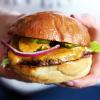So there you go, there are requirements for temperature at the manifold depending on equipment below, but ultimately whatever the equipment does it needs to be capable of 160ºf surface temp on the dishes/utensils.
I recommend this tool as well for easy verification and not having to inventory chemical indicator strips that tend to wash off in the dishwasher when you use them https://www.thermoworks.com/DishTemp
Missouri
Hot water mechanical operations by being cycled through equipment that is set up as specified under §§ 4-501.15, 4-501.112, and 4-501.113 and achieving a utensil surface temperature of one hundred sixty degrees Fahrenheit (160 °F) as measured by an irreversible registering temperature indicator;
4-501.19 Manual Warewashing Equipment, Wash Solution Temperature. The temperature of the wash solution in manual warewashing equipment shall be maintained at not less than one hundred ten degrees Fahrenheit (110°F) or the temperature specified on the cleaning agent manufacturer's label instructions.
4-501.110 Mechanical Warewashing Equipment, Wash Solution Temperature.
(A)The temperature of the wash solution in spray type warewashers that use hot water to sanitize may not be less than:
(1) For a stationary rack, single temperature machine, one hundred sixty-five degrees Fahrenheit (165°F);
(2) For a stationary rack, dual temperature machine, one hundred fifty degrees Fahrenheit (150°F);
(3) For a single tank, conveyor, dual temperature machine, one hundred sixty degrees Fahrenheit (160°F); or
(4) For a multi-tank, conveyor, multi-temperature machine, one hundred fifty degrees Fahrenheit (150°F).
(B) The temperature of the wash solution in spray-type warewashers that use chemicals to sanitize may not be less than one hundred twenty degrees Fahrenheit (120°F). 66
4-501.111 Manual Warewashing Equipment, Hot Water Sanitization Temperatures. If immersion in hot water is used for sanitizing in a manual operation, the temperature of the water shall be maintained at one hundred seventy-one degrees Fahrenheit (171°F) or above. P
4-501.112 Mechanical Warewashing Equipment, Hot Water Sanitization Temperatures.
(A)Except as specified in ¶
(B) of this section, in a mechanical operation, the temperature of the fresh hot water sanitizing rinse as it enters the manifold may not be more than one hundred ninety-four degrees Fahrenheit (194 °F), P or less than:
(1) For a stationary rack, single temperature machine, one hundred sixty-five degrees Fahrenheit (165 °F); P or
(2) For all other machines, one hundred eighty degrees Fahrenheit (180 °F). P
(B) The maximum temperature specified under ¶ (A) of this section, does not apply to the high pressure and temperature systems with wand-type, hand-held, spraying devices used for the in-place cleaning and sanitizing of equipment such as meat saws.
4-501.113 Mechanical Warewashing Equipment, Sanitization Pressure. The flow pressure of the fresh hot water sanitizing rinse in a warewashing machine, as measured in the water line immediately downstream or upstream from the fresh hot water sanitizing rinse control valve, shall be within the range specified on the machine manufacturer’s data plate and may not be less than thirty-five (35) kilopascals (five pounds (5 lb) per square inch) or more than two hundred (200) kilopascals (thirty pounds (30 lb) per square inch).













